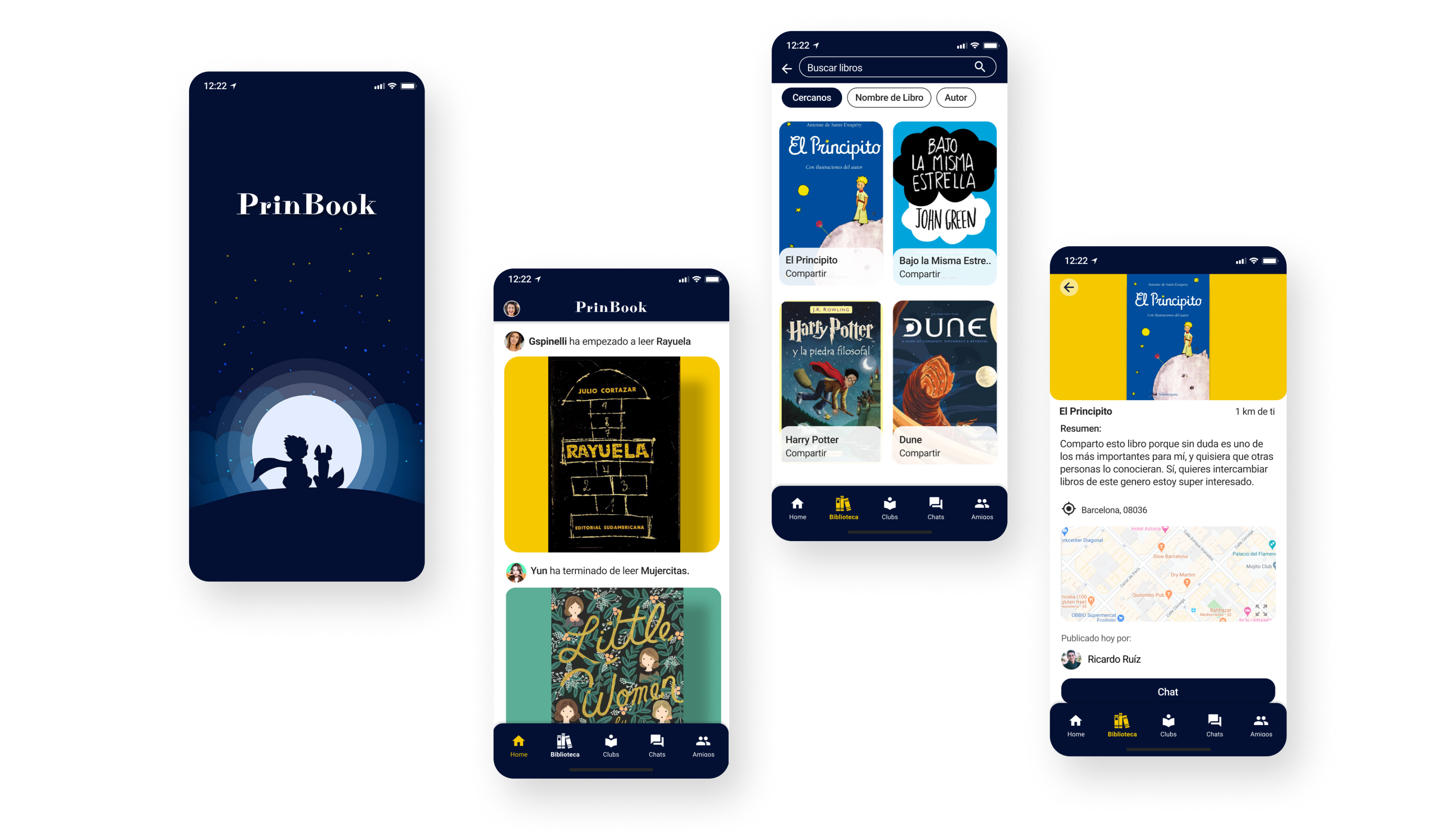

Prinbook is a mobile application that allows users to share and donate physical books among themselves, helping those who may not have the resources to purchase them.
Product Designer
1 month
Design Thinking



In many parts of the world, access to physical books is becoming difficult whether due to high costs or limited availability depending on where you live. At the same time, reading has become a solitary activity for many, especially in a post-pandemic context where people feel more isolated at home. This makes it harder to share opinions, discover new reads through others, or be part of a reading community. The challenge was to design an experience that makes reading more accessible, social, and motivating.
Prinbook is a mobile app that enables users to share and donate physical books within their community, helping those who may not have the resources to buy them. Beyond book sharing, Prinbook allows members to create or join book clubs virtual or in person to connect with others who share their interests. By making reading more social and collaborative, the platform encourages users to stay motivated, explore new genres, and feel part of a community.
A I began my research stage by empathizing with millennial and centennial users. For this, I conducted techniques of Desk Research and Netnography to discover the reasons these generations read, their preferred genres, reading habits, etc. On the other hand, I also used the "Keywords" tool to find out what people mostly search for on Google. Surprisingly, many of them are interested in knowing where they can donate their books and how they can join online book clubs.
I conducted surveys via Google Survey with approximately 200 people and 4 in-depth interviews, discovering the following:
After conducting user interviews and analyzing survey data, I moved forward with
creating user
personas. For this project, I developed two personas along with their user
journeys.
By identifying each persona’s pain points, I was able to extract key insights.
These insights
helped uncover design opportunities and led to the formulation of How Might We (HMW) questions
to guide the ideation process.
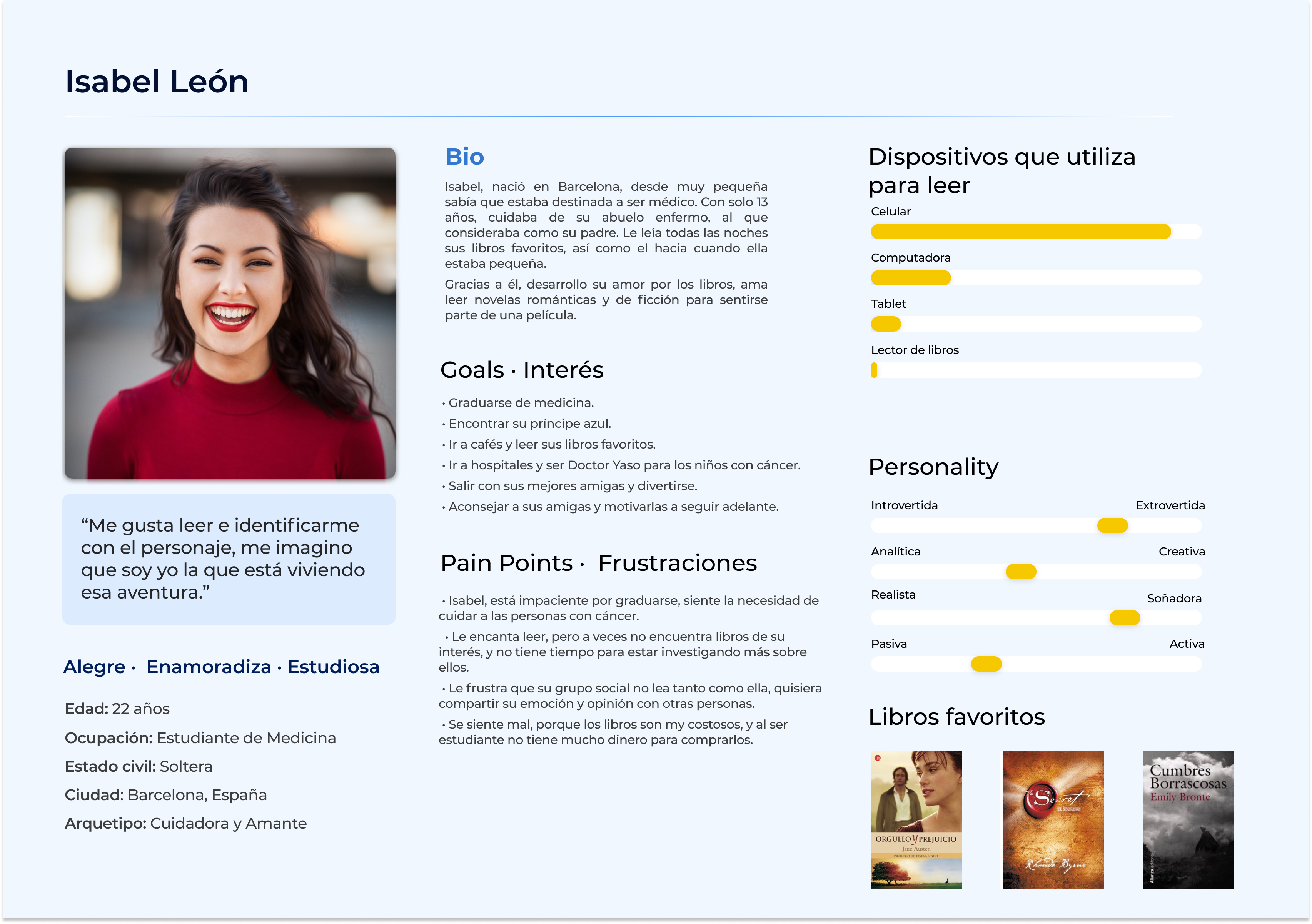
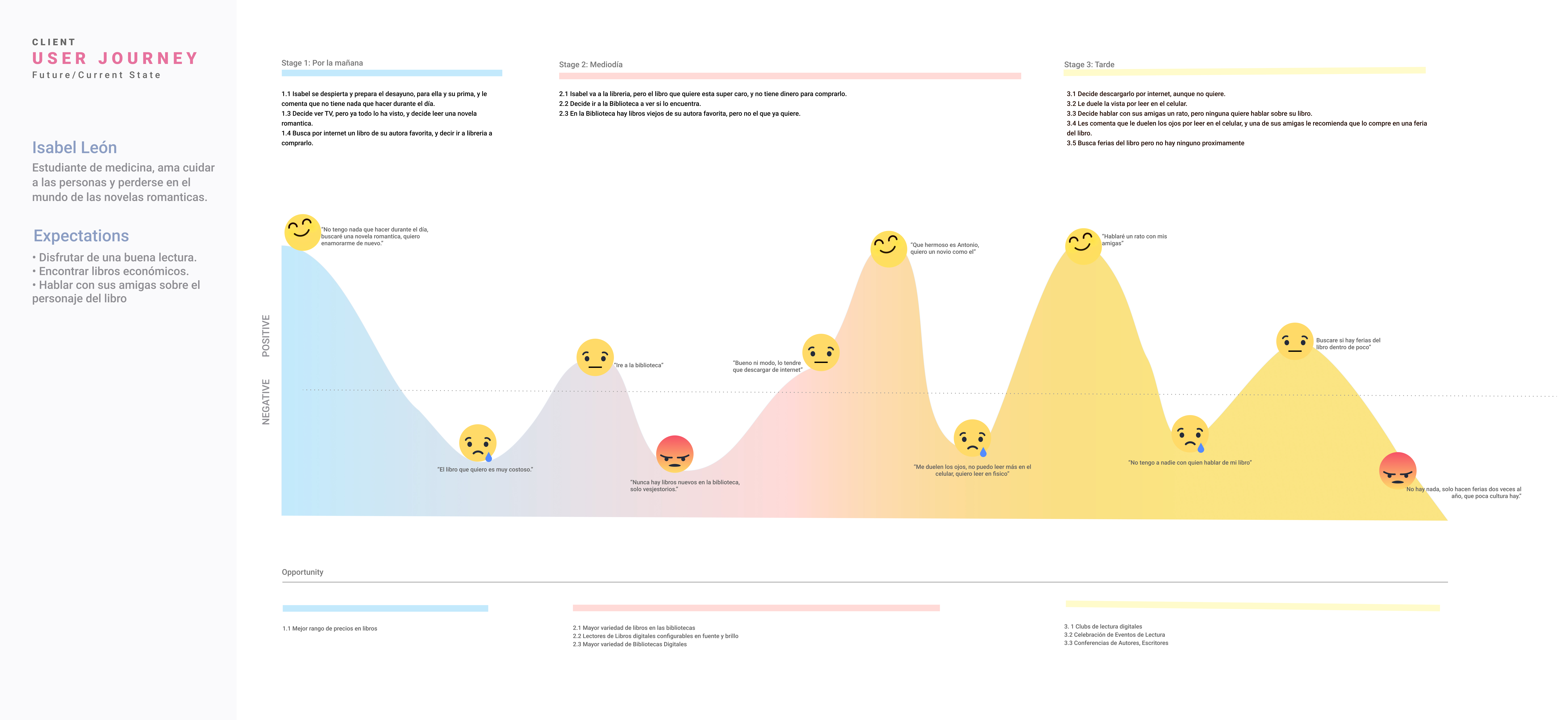
In this stage, I focused on generating the greatest number of ideas, whether impossible or possible, in order to solve the problems that users were facing. To separate my ideas, I applied the 2x2 classification and chose the two ideas that I felt could help users the most:
I decided that my app would consist of 5 main modules, corresponding to the most important functionalities:

I designed low-fidelity and high-fidelity wireframes to prototype the application and conduct tests with users.
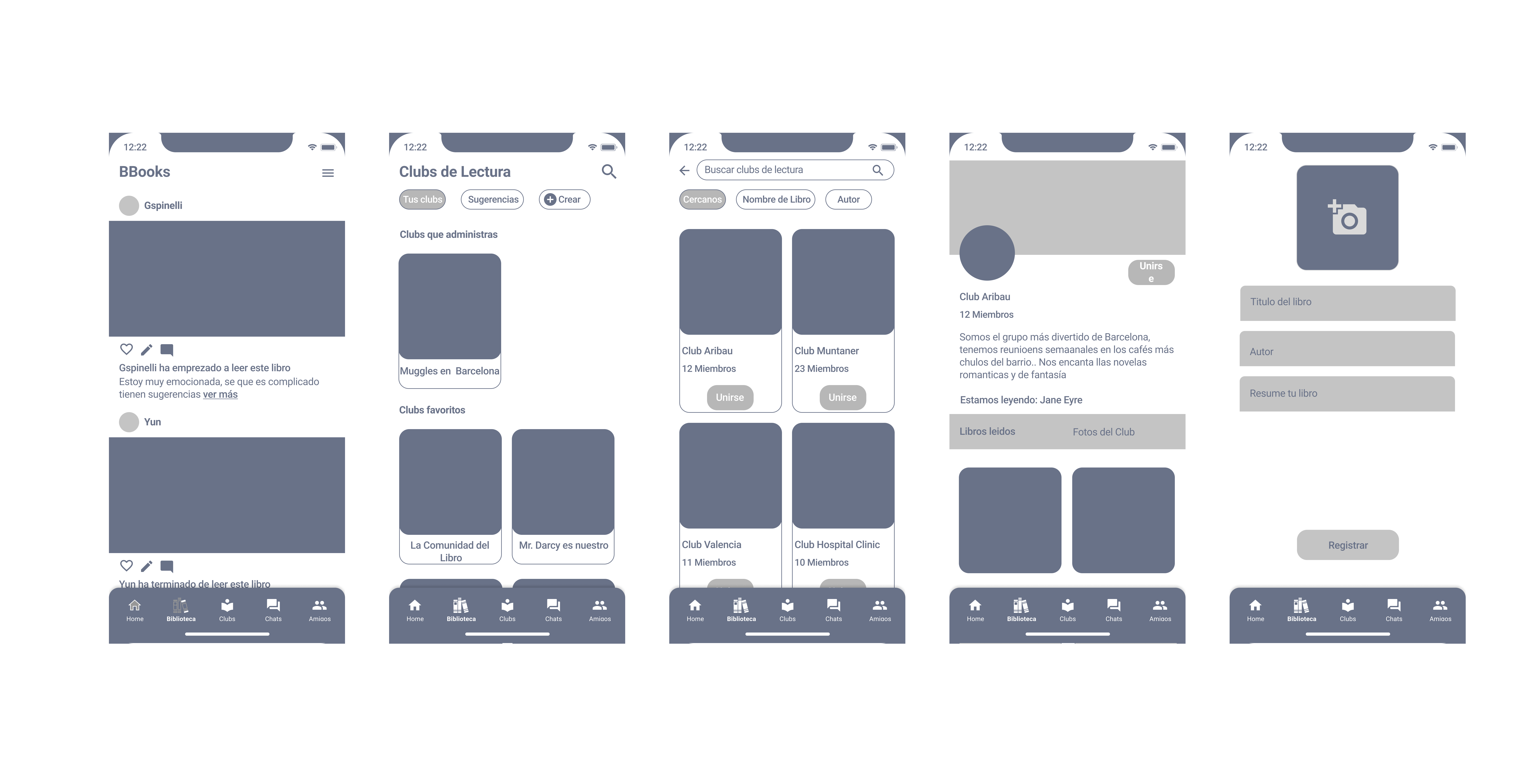
The next step was to give color and identity to the application. For the app's design, I took inspiration from "The Little Prince" book since it is the book that most users indicated was the first book they read:
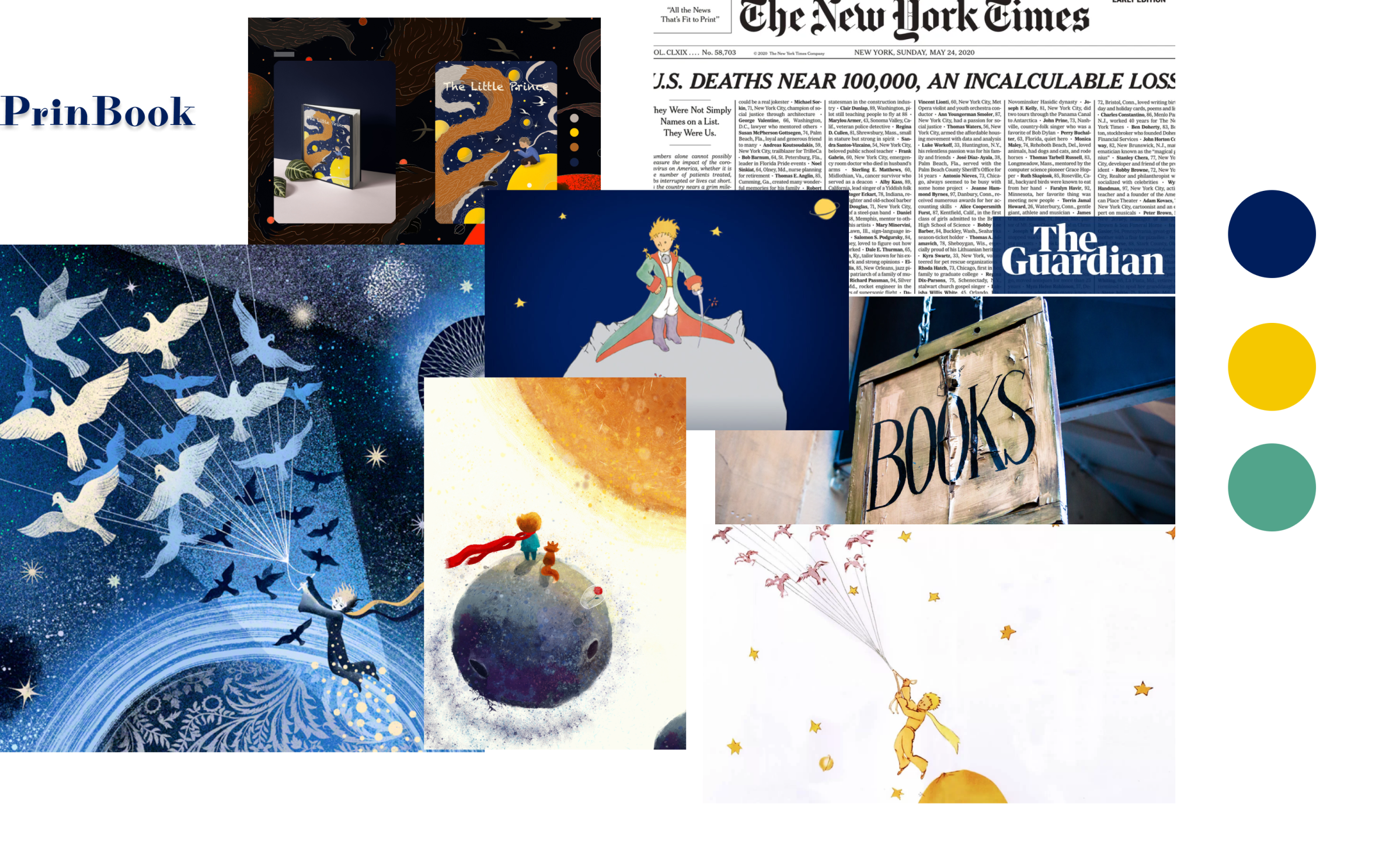
After defining the wireframes, conducting user tests, mapping user flows, and creating the style guide, I translated everything into high-fidelity screens. The design focused on clean layouts, minimal UI, and a modern, consistent visual style aligned with the brand.
With Prinbook, you can share, exchange, or donate physical books with your close friends.
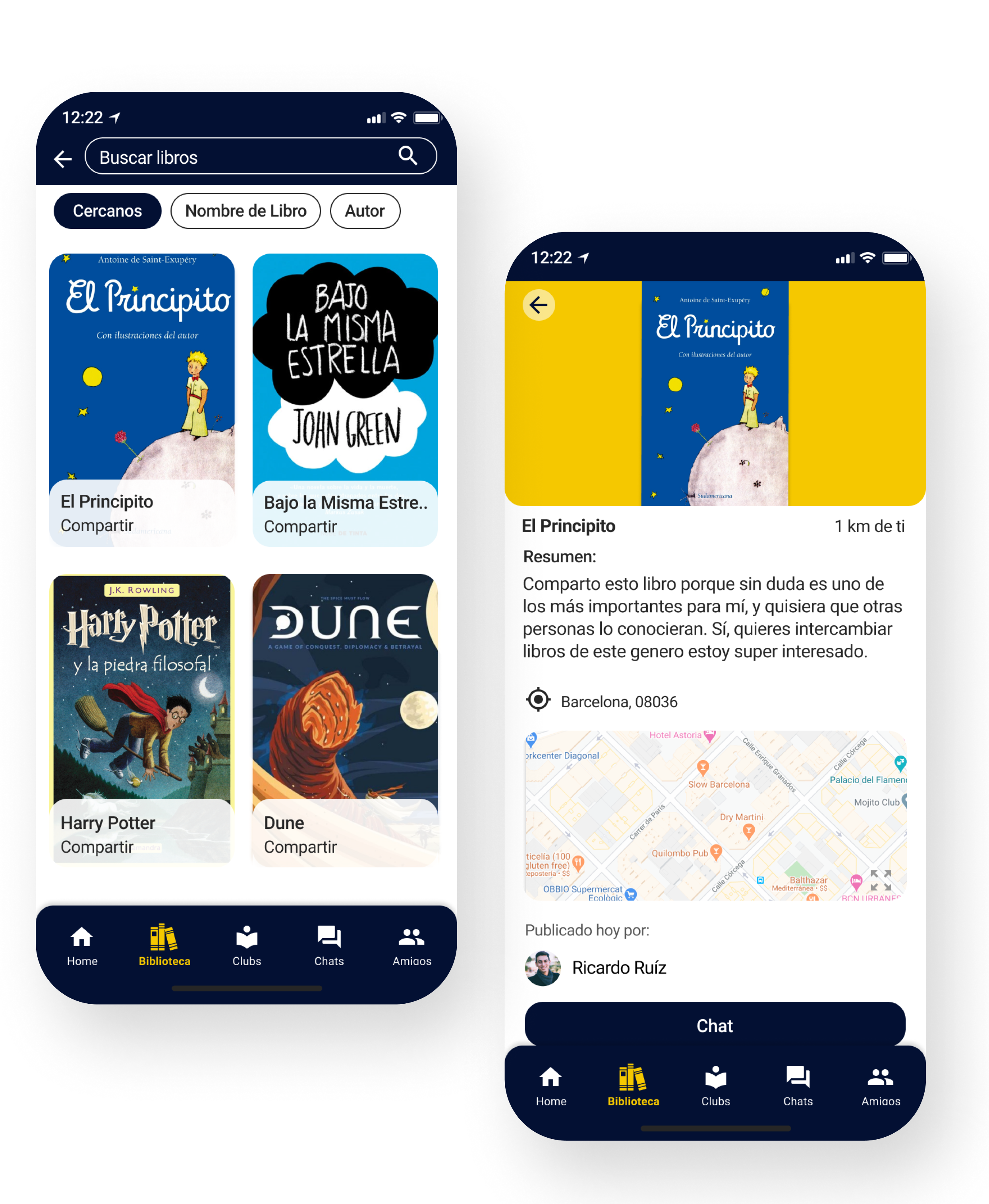
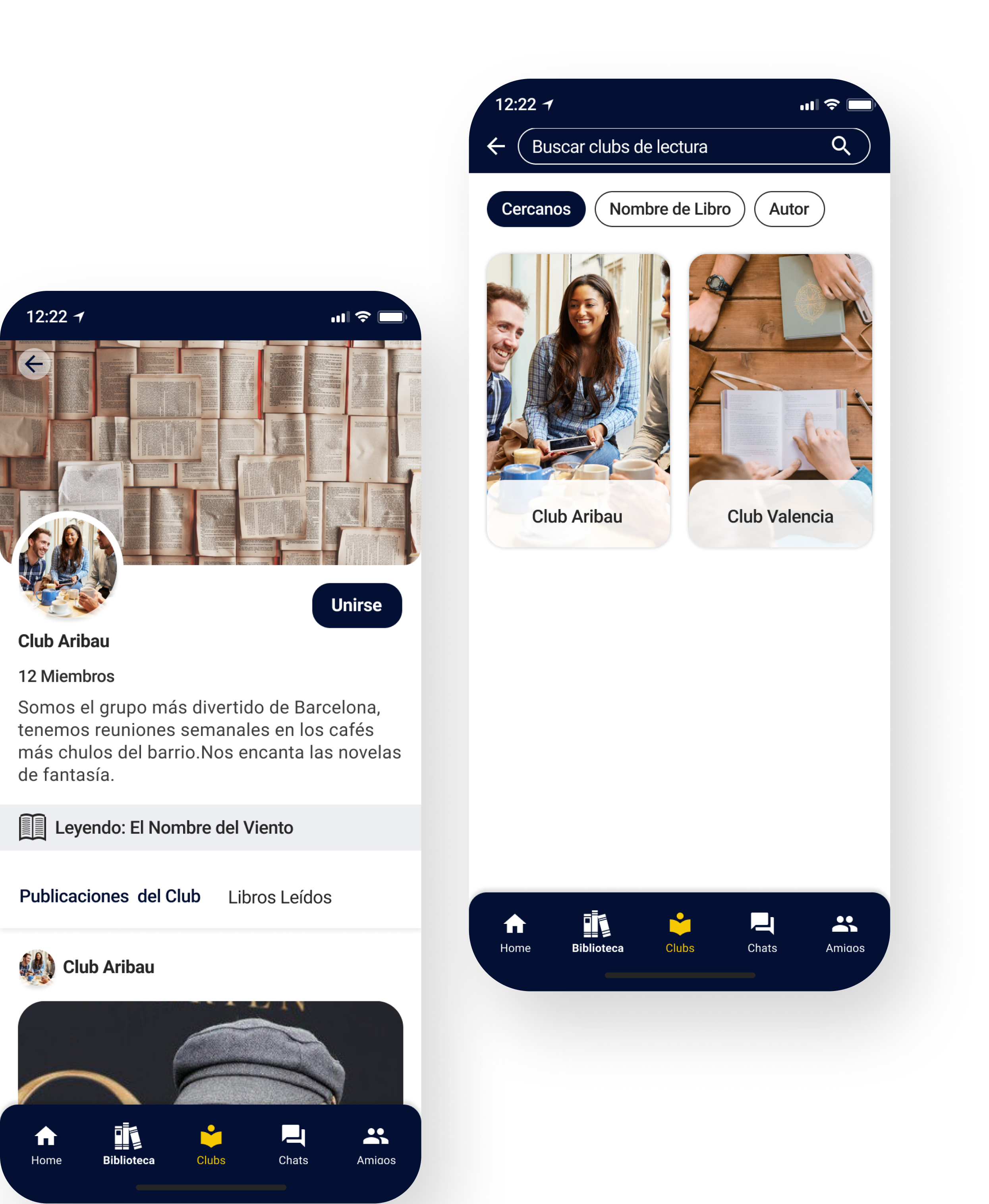
Share your ideas, feelings, and emotions with others through book clubs.
With Prinbook, you can post the books you are currently reading, those that others are reading or have finished, and you can also leave your opinions and ratings on them.
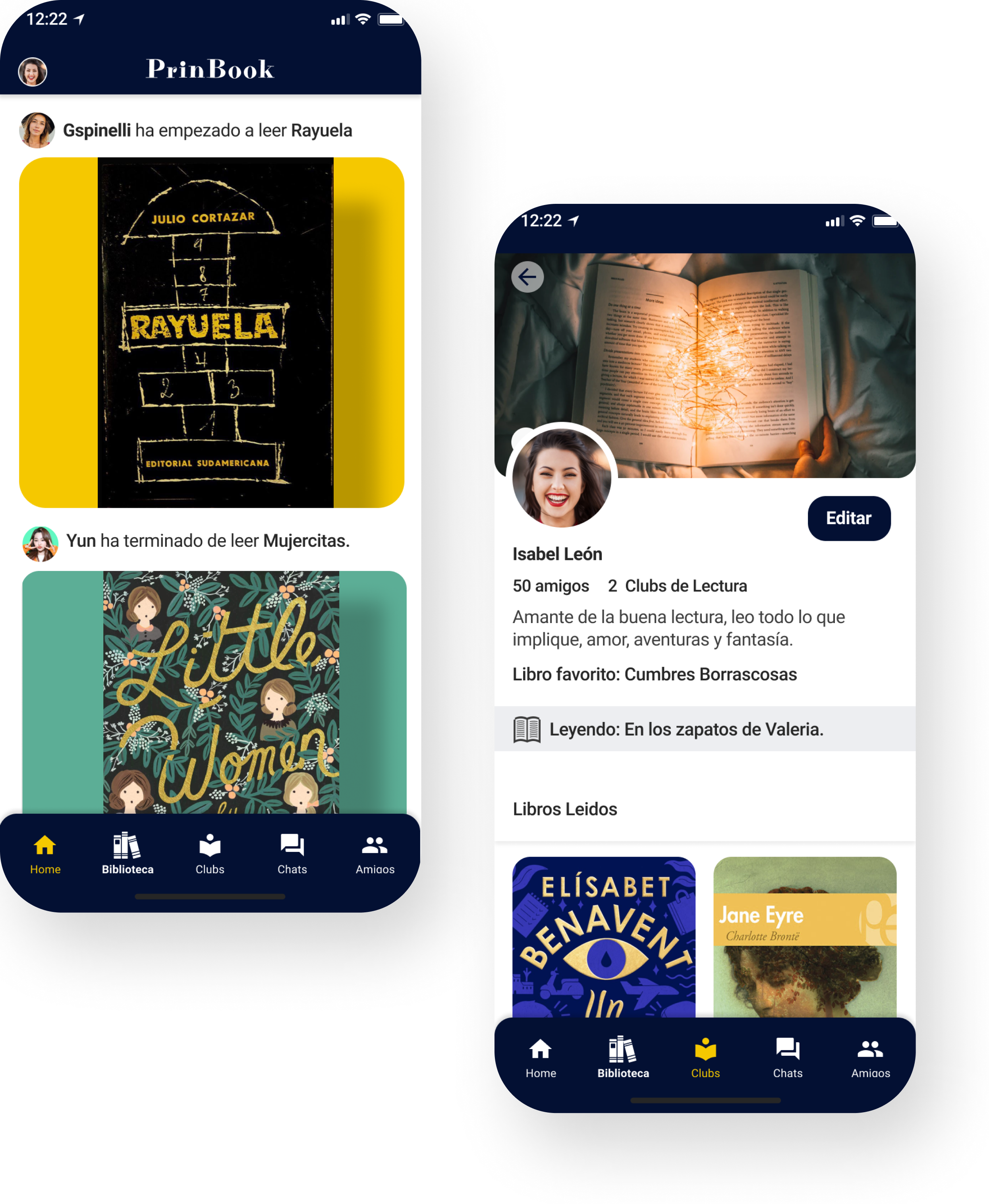
For the user testing phase, I invited five participants to try out the app using Figma. Each participant was asked to complete four specific tasks, with the goal of evaluating whether they could navigate and complete them independently, without guidance. Based on the test results, I identified the following key areas for improvement: